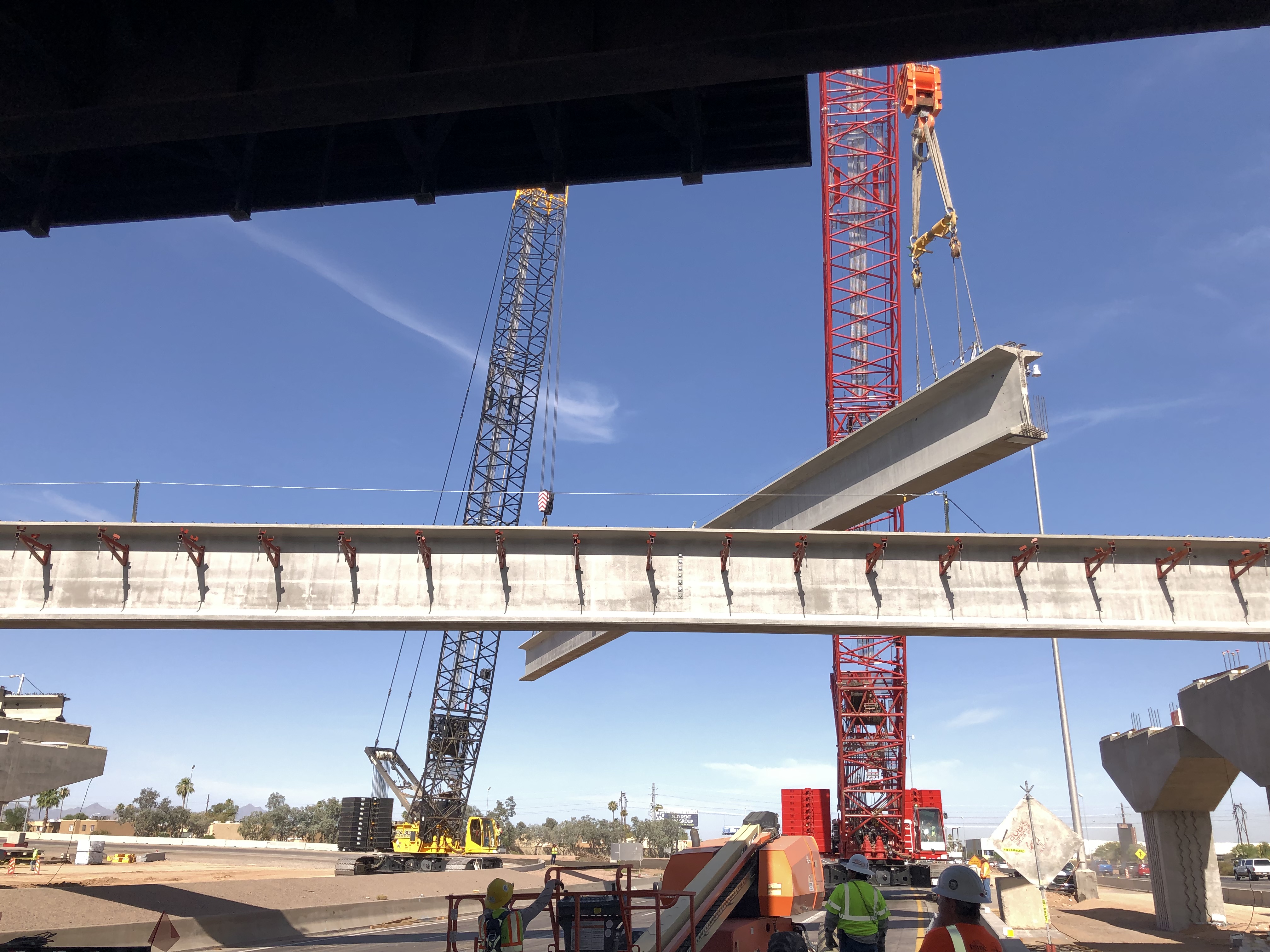The Whys Behind Weekend Highway Closures
The Whys Behind Weekend Highway Closures

You only have to work at the Arizona Department of Transportation for about five minutes to understand how passionate people are about their commutes. And rightly so. Travelers want to get to and from the places they need to be quickly and safely.
We understand closing a highway so we can work on it adds time, and sometimes extra miles, to a commute. With every project comes a balancing act of getting critical work completed while trying to reduce impacts to the traveling public. Many of you offer comments, questions and suggestions for us, which we appreciate. Among the most common:
“You shouldn’t close all of the lanes at the same time. When I lived in (enter another state here) they only closed a couple lanes at a time to do road work.”
“Why do you have to close the highways on the weekends?”
“You should do all of the work overnight when fewer people are driving.”
All fair points. But there is a method to the madness that we call “maintenance of traffic,” or MOT for short.
MOT comes into play when crews set up temporary construction zones on the highway system. While it’s critical to ensure movement of traffic through or around the work area, the foundation of MOT is keeping everyone - drivers, their passengers and construction crews - safe. That’s why closing all of the lanes is necessary at times.
Certain types of work over the travel lanes, such as relocating overhead power lines, taking down a bridge or setting bridge girders, cannot occur with drivers on the roadway below. The risk of potentially injuring travelers or damaging their vehicles is too great. Similarly, it’s not safe for workers to put down lane striping or set up concrete barriers on a multilane highway with thousands of vehicles driving by at 55, 65 and 75 mph.
A project’s schedule is another factor in determining the size and scope of a closure. Fully closing a highway so 100% of the work is completed in one weekend can be a better alternative than partially closing the highway over three weekends so about 30% of the work is completed each time. Getting the work done more quickly benefits all of us. No one ever complains that a project finished too soon.
That also helps to explain why not all of the work is done on weeknights, and why weekend closures are necessary.
Weeknight highway closures are actually pretty common. Crews do a significant amount of work while most of us are sleeping. ADOT’s overnight closures generally occur from 9 or 10 p.m. to 4 or 5 a.m., ensuring the highway is fully open for your weekday morning commute.
Limiting a project to overnight work only - and not allowing for weekend closures - will undoubtedly add time (and cost) to a project. Consider this:
Closing a freeway between a Friday night and a Monday morning provides about two full days for work to get done (after you subtract the hours needed to set up and take down the traffic control barriers and signs).
If a project has 25 weekend closures in a year that adds up to 50 work days. Over the course of a three-year project, it’s 150 work days - or five months.
Finishing a project five months earlier is a good thing; motorists get to take advantage of the improvements sooner and - depending on factors such as fuel prices and inflation rates - the project will often cost less.
We know many people are out and about on the weekends. Yet, an even greater number of people use our urban highways on weekdays. Although we saw a dip in traffic volumes during 2020, our urban highways are back to pre-pandemic levels during the work week.
That doesn’t mean work won’t get done on week days. We collaborate with our contractors to develop schedules that allow them to have crews in the field without impacting drivers. On the Interstate 10 Broadway Curve Improvement Project, for example, work is happening on weekdays, but behind concrete barriers in the median of I-10 and on the outside of travel lanes. This allows our workers to make progress while we fully maintain all of the travel lanes zone during peak travel times.
We can also make considerable progress - and more quickly - by allowing extended closures of on or off ramps. For example, the I-10 Broadway Curve project team is planning to close the ramps 32nd and 40th streets for up to 45 days each to make improvements. Both ramps won’t be closed at the same time, however, so motorists will have a convenient, nearby alternate route. Extended ramp closures like these make it possible for crews to establish a work zone and keep it in place until they’ve completed the job. Again, this is a more time- and cost-efficient method vs. setting up and tearing down the work zone daily.
What you might not know is we don’t schedule work that requires highway closures during our “holiday moratorium,” which begins in mid-November and continues until the first work day after New Year’s Day. We also don’t close a highway that provides access to a special event with 30,000 or more people. Our highways also remain open over state holiday weekends when we know more drivers will be out enjoying our beautiful state.
Unless there is an unplanned incident on or next to the highway (crashes, wildfires, for example) we strive to provide as much information as possible in advance so you can plan ahead. We encourage you to allow extra travel time and use the detours we provide. You can also download the free AZ511 app to get real-time highway conditions statewide.
We work hard every day to achieve our vision of becoming the safest, most reliable transportation system in the nation - but sometimes that means we need to close a road.
